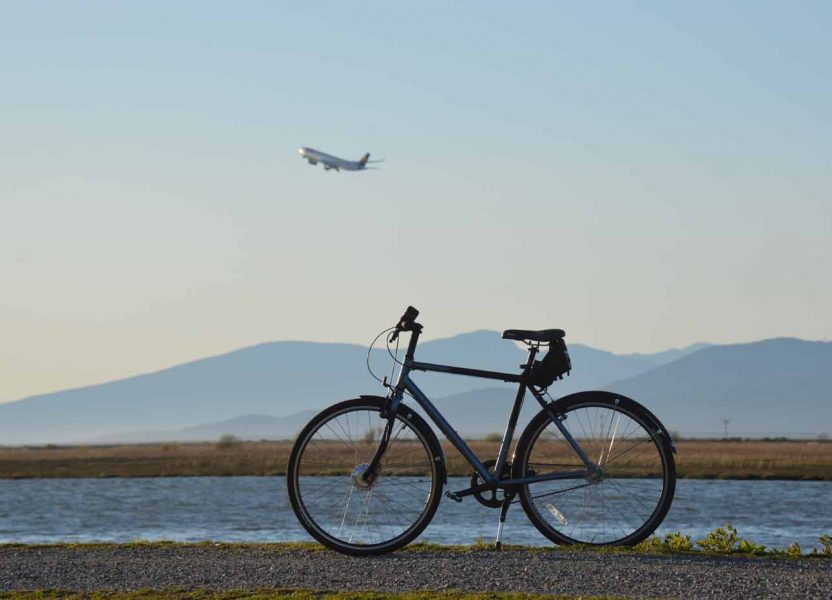Air Travel with an E-Bike
Over the past few years my wife and I have travelled to numerous places for extended cycling trips of various types… cycle-path touring in Belgium and the Netherlands, road touring (Italy), and mountain touring (BC). My wife uses a conventional bike and I use my Pedal Easy electric bike.
Air travel with our bikes has always been straightforward. Due to its light weight, the Pedal Easy electric bike is treated by the airlines as a normal bike. Bikes travel as oversized luggage, for which there is usually a small extra charge (Air Canada charges $50 plus tax) each way. We use hard shell luggage cases designed for a bicycle (purchased on e-bay for $250 plus $150 shipping). The battery must be carried as hand luggage; since that is the official policy of most airlines for lithium ion batteries. The disadvantage of a hard shell case, of course, is that it must be stored somewhere while you are cycling, and you have to return to the same place at the end of your trip. The easiest solution is leaving the case in airport hotel storage or with friends. When collecting my luggage at the airport I have talked to other cyclists who use cardboard boxes (often available free at bike stores) for air transport, and this seems to work well for them. On arrival they can discard the box and pick up a new one for the return trip, allowing the possibility of cycling to different departure destinations without concern for how to move the case. Also, I have seen entire bicycles in plastic bags coming off air flights, but even though they seem to allow it, most airlines “official” policies require protective packaging. I would think that the uncertainty of being rejected at the gate discourages most people from trying this. The PedalEasy e-bike is pretty robust and it is not very heavy, so I would think that it would travel well unprotected or in a cardboard box.
Different countries have different rules regarding e-bike power, speed and control. The Pedal Easy bike is set up for North American rules. When equipped with the optional Cycle Analyst, it can be set to meet virtually any e-bike standard, but I have never bothered with re-programming it…instead I just ride it in a manner consistent with the rules.
When we are traveling, we equip our bikes with panniers on a rear rack, and often a front handlebar-mounted bag. But we travel lightly…which I would highly recommend. For all of our European touring we have stayed in B&B type accommodation or with friends, so we have not had to carry camping, food or cooking equipment. The total weight of all gear, including panniers, spare clothing & lunch for the two of us has typically been 14 kg. When camping, and carrying food (mountain biking in BC), the initial total weight for the two of us on a ten-day trip (with one food replenishment midway) was 26 kg (which included 2 extra batteries at 1.6 kg each). We carry 1.5 to 2 litres of water each, included in those totals.
Since I am riding the electric bike, I am able to carry more of the weight than my wife, so we try to keep her gear weight below 10 kg. This works very well, and allows us to cycle comfortably for a whole day. Typically a day involves lots of stopping to take photos or watch birds, so our daily range is from 40 to 100 km. When mountain bike touring on loose gravel or sand surfaces our range is more like 30 to 50 km. A lot of time can be spent in navigating. I have a handlebar-mounted Smart phone that is powered by the bike battery, so its GPS navigation can be left on all day if necessary (an option on our e-bikes provides USB power at the handlebar).






